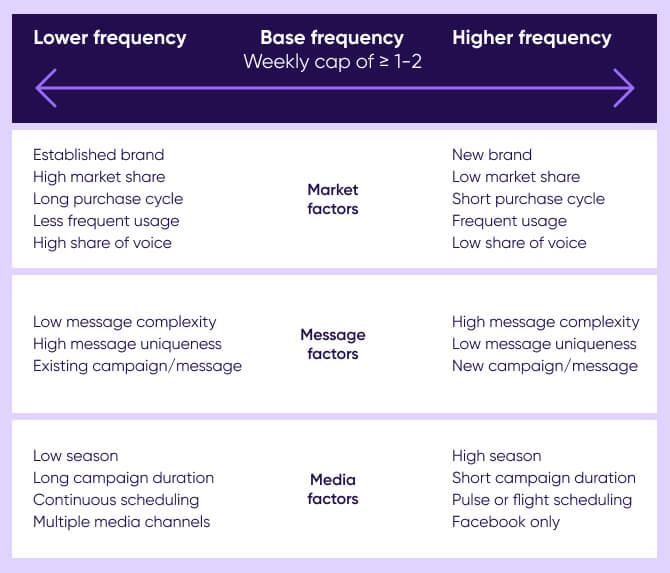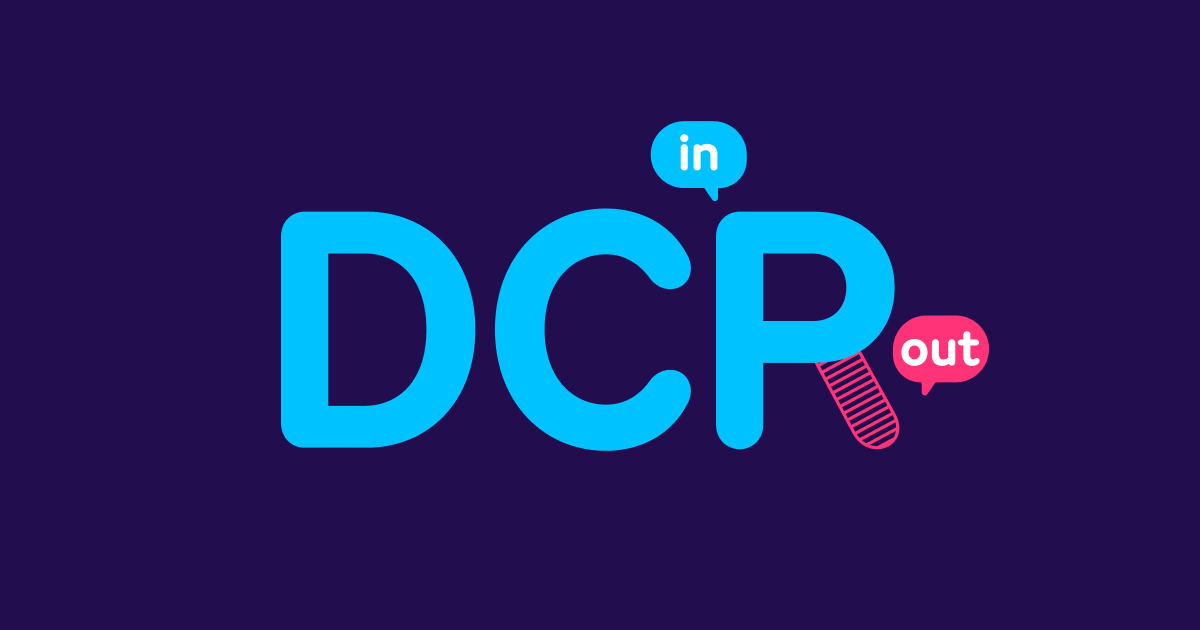
Frequency capping
Frequency capping is an online advertising technique that limits the number of times an ad is shown to the same user to prevent fatigue.
What is frequency capping?
Frequency capping is an online advertising technique that controls how often a single user sees an ad. It balances ad exposure with audience engagement.
With frequency limits, you avoid annoying your audience, protect engagement, preserve brand perception, and prevent wasted ad spend. Caps ensure ads remain fresh and relevant, reaching new potential customers rather than retargeting the same users excessively.
Why is frequency capping important?
It’s never a good idea to blow through your ad budgets without any control over who sees your campaigns and how often they see them. Here are a few reasons why frequency capping is essential for your online ad campaigns:
1. Prevent irritation and fatigue
When audiences see the same ad over and over, they get bored and stop paying attention — a phenomenon known as ad fatigue. Constant repetition can also get pretty irritating.
Frequency caps prevent over-serving the same audience. Consumers are becoming more intolerant of advertising, with 64% of US adults saying they spend extra time finding ways to avoid ads on free-with-ads video platforms like YouTube and Hulu.
2. Extend your campaign longevity
Limiting ad frequency can help spread your impressions over a longer period of time without losing effectiveness. This also encourages advertisers to use more variety in ad creatives.
3. Optimize ad budgets
Frequency capping adds control to help stretch your dollar. It ensures your budget is spent targeting new audiences instead of showing ads repeatedly to the same users. By managing ad frequency by placement, time of day, and day of the week, you gain greater control over your ads’ effectiveness.
How does frequency capping work?
Frequency capping is a common feature offered by ad networks like Google Ads, Meta Ads, and programmatic ad platforms. Some demand-side platforms (DSPs) also provide frequency capping.
There are three elements to consider when setting caps:
- Frequency — how many times to show an ad to a user
- Creative — which creative or campaign should be limited
- Timeframe — how long the cap should be in place
Ad platforms track how often an ad or campaign is shown to the same users using unique identifiers like cookies, device IDs, or tracking pixels. Before serving the ad, the platform checks the frequency cap to see if the limit the advertiser sets is reached. If not, the ad is served, and the impression is logged within milliseconds to maintain a seamless user experience.
The impact of cookie deprecation
Frequency capping hinges on identifying the user and checking if they’ve seen the ad previously. But times are changing in the industry. With increasing privacy regulations like Apple’s ATT framework and cookie deprecation, ad networks are finding new ways to fill the data gap.
Mobile advertisers are shifting from relying on device-level tracking that identifies specific users to more aggregated data and probabilistic modeling. Mobile measurement partners (like AppsFlyer) effectively use probabilistic modeling as a fallback method when unique IDs are unavailable, employing machine learning to estimate user behavior based on large data sets and aggregated insights.
How to set the right frequency cap
While setting frequency caps from the start of your campaign is a good idea, always check your data to get them right. Here are the key metrics to guide you.
Ad schedule performance: On platforms like Google Ads and Meta Ads, you can check what time or day of the week your ads are most effective. Consider day or time capping based on this report.
Conversion rate: Compare conversion rates across users who saw the ad multiple times. If conversions drop significantly after a certain number of views, it’s a sign that frequency capping may help improve efficiency.
Frequency: High ad frequency with low conversion rates could indicate that your ads are no longer connecting with users. It may be time to limit that creative to prevent fatigue.
Impressions: Review the total impressions to understand how often your ads are shown. High impressions with low engagement indicate ad fatigue.
Click-through rate (CTR): Declining CTR over time may signal ad fatigue and a need to refresh your creatives. What initially grabbed attention has become wallpaper.
Best practices for frequency capping
Your ad campaigns should objectively be measured by total impact, as frequency directly influences brand lift. You can maximize campaign potential by tailoring frequency to specific market, message, and media factors — there’s no one-size-fits-all approach.
As a good starting point, Meta’s research condenses the “best practices” of frequency capping into one handy chart.
This chart outlines the various market, message, and media factors that influence frequency capping:
- Lower frequency: Ideal for established brands with high market share, long purchase cycles, unique messages, and multiple media channels. Suitable for continuous or long-duration campaigns in low-season periods.
- Higher frequency: Recommended for new brands with low market share, short purchase cycles, and frequent usage. Applies to complex or less unique messages, new campaigns, short-duration, high-season campaigns, or single-channel (such as Facebook-only) strategies.
Here are some further tips to help you make frequency capping work for you:
Rotate creatives
Crafting a lot of good creatives can be resource-intensive, but it’s a worthwhile investment. When there’s more variation between creatives within one campaign, your audience is less likely to experience ad fatigue across the board. It’s not always about how many different creatives you have, but the distinct variety between them.
Not all impressions are created equal
Not every impression is worth the same. Some ad placements may have lower visibility and be more crowded than others, hence making your impressions less effective. Platforms with multiple placements, high ad density, or overlapping audiences can increase exposure, leading to higher frequency. Engaging placements may need less frequency to be effective, while less engaging spots must be shown more often.
Key takeaways
- Frequency capping is an online advertising technique that limits how often a single user sees an ad, helping prevent ad fatigue.
- Frequency capping prevents user irritation, extends campaign longevity by spreading impressions over time, and optimizes budgets by preventing overspending on the same audience.
- Ad platforms use unique identifiers like cookies or device IDs to track impressions per user and enforce frequency limits in real time, maintaining a seamless experience.
- With cookie deprecation and privacy rules, platforms are shifting to probabilistic modeling and aggregated data, enabling marketers to approximate frequency control without identifying individual users.
- Adjust frequency caps based on market, message, and media factors. Other best practices include regularly analyzing performance metrics like CTR and conversion rate, and rotating ad creatives to maintain audience interest and prevent fatigue.




